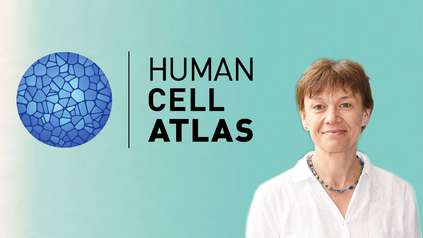New DERMATLAS project will create world's most comprehensive public resource of rare skin tumour genomes
The world’s largest and most diverse genomic atlas of skin tumours will be created by Wellcome Sanger Institute researchers and their collaborators to help understand and treat skin cancer.
While the genome sequencing will be based at the Sanger Institute an international team of pathologists and dermatologists will provide tumour samples from hospitals all over the world to ensure a diverse database.
The project, led by Dr David Adams, will analyse 70 skin tumour subtypes that have not been previously sequenced and collect up to 50 cases for each type from a range of body sites to build a diverse and complete cell atlas of these tumours.
“Under the microscope, some skin tumours can look similar to other types of cancer, such as rare tumours of the breast, making it more difficult to diagnose these easily. When these skin tumours are fully sequenced, it will allow more precise diagnoses of skin tumours as well as a deeper understanding and mapping of the mutations in DNA that cause these cancers to form.”
Dr David Adams, Project lead at Wellcome Sanger Institute
In addition, the project will identify the drivers of these tumours and search for mutational signatures left by carcinogens in the genome sequences, including exposures to certain substances or processes that might be linked to skin tumour development. Scientists will also investigate if there are certain viruses that could be linked to the aetiology of these tumours. This has not been previously explored in most skin cancer types.
The team will also use data from the Human Cell Atlas, an international initiative to map all cell types in the human body. By analysing data from healthy skin cell types generated by the Human Cell Atlas, the DERMATLAS team will unpick the cell types that are the origin of different skin cancers subtypes.
“Through international collaboration and state-of-the-art analysis, DERMATLAS will allow a deeper understanding of the genetic changes that lead to tumour development. It will create an open resource that will benefit clinicians in diagnosing skin tumours as well as possibly identifying new treatments and ways to prevent these diseases.”
Dr Daniela Robles Espinoza, International Fellow at the Wellcome Sanger Institute, who leads the Cancer Genetics and Bioinformatics Group at the International Laboratory for Human Genome Research, National Autonomous University of Mexico
More information
*For more information on the Dermatlas project, visit: https://www.dermatlasproject.org/
There is currently a role available for a Principal Bioformatician within this lab, for more information please see: https://jobs.sanger.ac.uk/vacancy/principal-bioinformatician-experimental-cancer-genetics-group-439864.html
Funding:
This project is supported by the Medical Research Council





